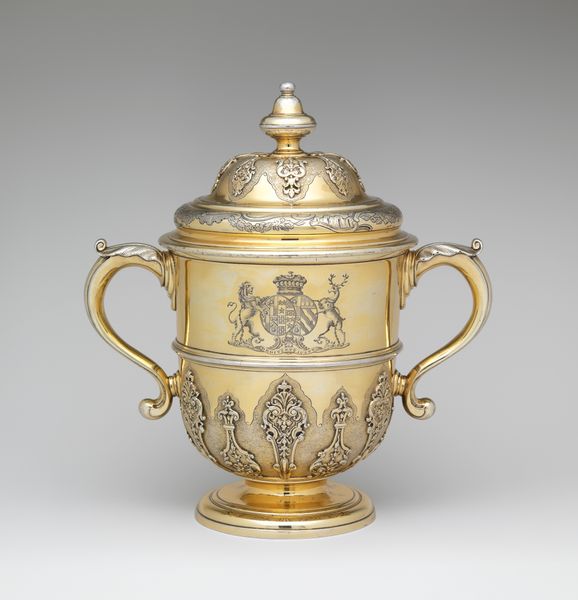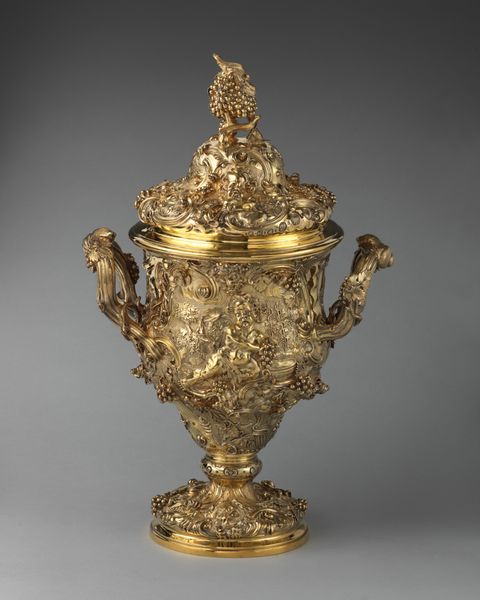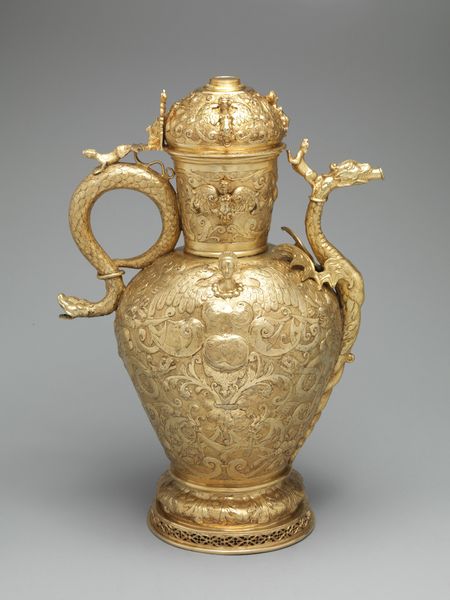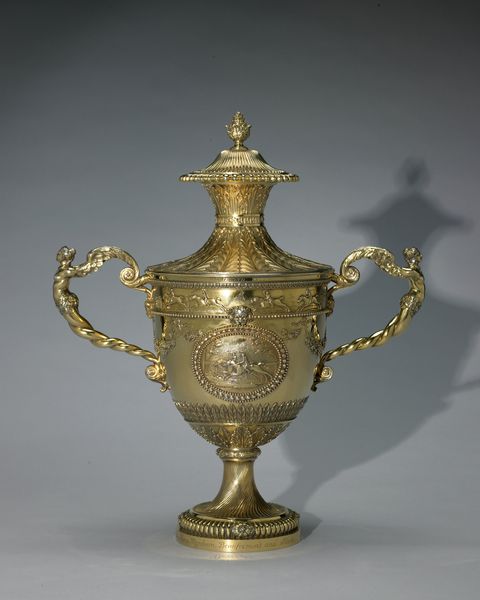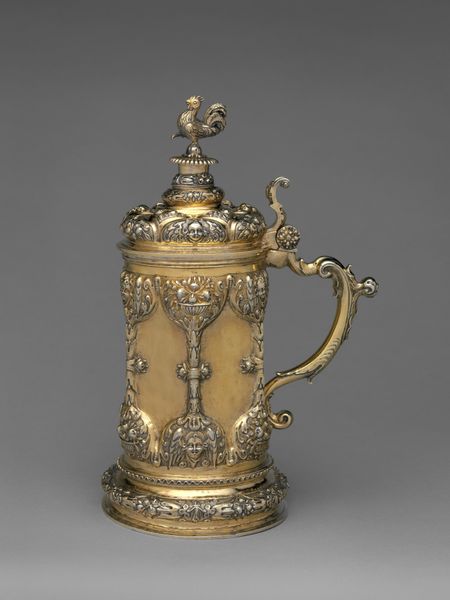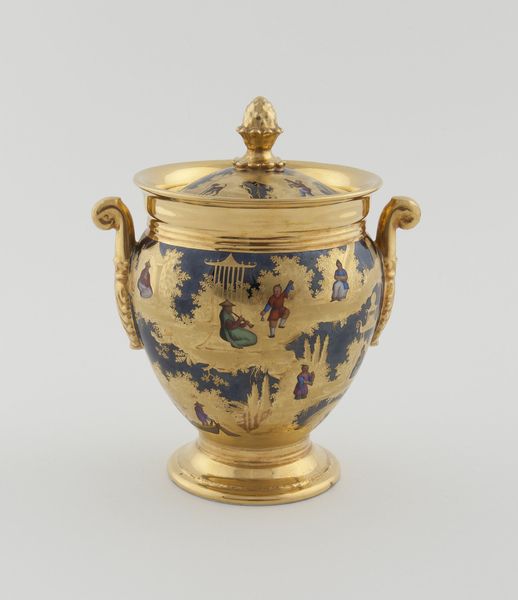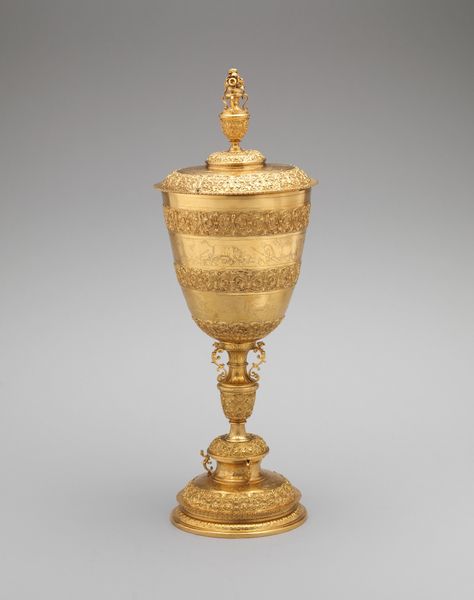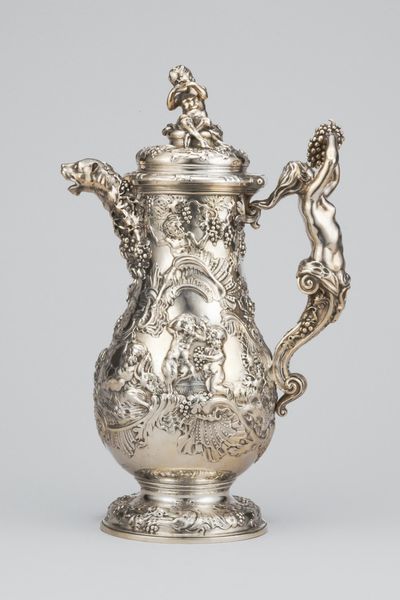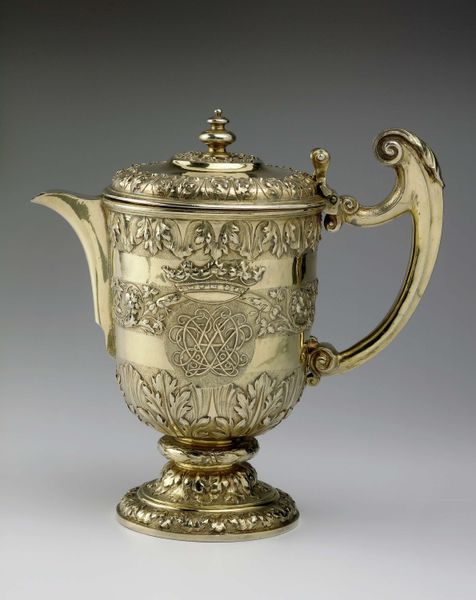
metal, gold, ceramic, sculpture
#
baroque
#
metal
#
gold
#
ceramic
#
sculpture
#
ceramic
#
decorative-art
Dimensions: Overall (confirmed): 10 1/4 x 9 1/2 x 5 1/2 in., 22 oz. 5.3 dwt (26 x 24.1 x 14 cm, 0.6925kg)
Copyright: Public Domain
Curator: What a dazzling object! Just look at the sheer opulence of this covered cup. Editor: It’s intensely ornate. My first impression is how it seems almost suffocatingly elaborate. The weight of all that gold! Curator: Indeed. This Two-handled Cup with Cover, dating from 1752 to 1753, epitomizes Baroque decorative art. It currently resides here at the Metropolitan Museum of Art. Imagine the ceremonial use it must have been subjected to. Editor: It's a vessel for displaying power. Beyond the sheer luxury of the materials, look at the specific iconography. Does the shield offer any familial connections? Curator: Yes, the finely engraved shield alludes to the aristocratic patronage it enjoyed. Notice also the recurring floral motifs – these were hugely symbolic during the period. What does it evoke for you? Editor: Those motifs, especially combined with the density of the ornamentation, make me think of abundance and fertility but maybe a dangerous, overwhelming kind of profusion, given its aggressive, even martial, display. It's a controlled riot of nature on display. Curator: The "controlled riot," as you put it, resonates strongly with the political climate of the time. The Baroque period thrived on such displays. Editor: It makes me think of what Freud said about obsessive displays: a desire to master a situation by controlling every single aspect of it. And those dark ebony handles set off against all that gold… it's an incredible contrast that punctuates the excess of the golden vessel. Curator: Those ebony handles offer visual and textural respite amidst all the glittering gold. They provide a functional contrast as well. I see the black handles more for aesthetics than practical utility. How might such elaborate displays reflect the collector's ambitions and social standing at this point in history? Editor: Ultimately, I find this cup fascinating. Beyond the skill, beyond even the aesthetic preferences of the age, one intuits something almost desperate about the degree of demonstration in its materiality. Curator: An interesting interpretation, perhaps a key for future visitors to decode, and perhaps connect to contemporary desires as well. Editor: Indeed. Visual and emotional symbolism offer timeless, and timely, experiences.
Comments
No comments
Be the first to comment and join the conversation on the ultimate creative platform.


